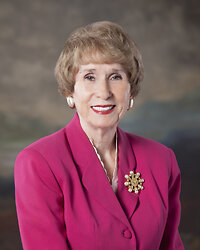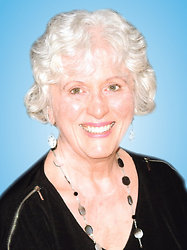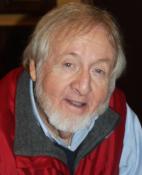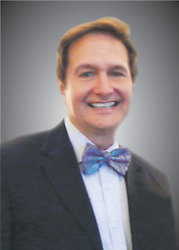THE LITTLE-KNOWN HISTORY OF HALLOWEEN
From Ancient Celts to Candy Corn
by Rob Lauer

It's one of America's favorite holidays. A time for parties, family gatherings, and civic events. Merchandise associated with it fills store aisles three months before its actual date. A growing number of Americans now celebrate it with lights on their houses and decorations on their front lawns. This year alone, consumer spending for this holiday is expected to reach an all-time high of $10.14 billion. Which holiday is it?
It isn't Christmas-which, according to a recent Harris poll, still reigns supreme as America's favorite holiday, followed by Thanksgiving. It is Halloween. Long considered a minor holiday for kids, Halloween has, over the past 20 years, become a favorite among grownups, with the average American adult spending $102 on the holiday. What brought about this change?
Actually, change has been a constant feature of Halloween-not only since it arrived in America in the 1840s but going all the way back to its roots in ancient Europe.
It all began more than 2,000 years ago with the Celts-a people whose culture encompassed most of modern-day England, Ireland, Scotland, and Wales.
Most cultures have holidays during which dead ancestors are remembered and honored. For the Celts in ancient Ireland, that holiday was called Samhain (pronounced Sah-ween and meaning "summer's end.")
Celebrated from sunset on October 31 until sunrise on November 1, the festival marked the end of the harvest season and the start of the Celtic New Year. The Celtic calendar divided the year into two halves-the first was a time of darkness, and the second was a time of light. The night of October 31 was considered a magical period between those two times, just as a new year was about to begin its dark first half.
It was believed to be a time when the veil separating the living from the dead was at its thinnest, and the spirits of the deceased could briefly walk the earth once more. The traditions for this Celtic holiday were intended to help the living connect with the spirits of their dead loved ones.
As with most ancient holidays, Samhain was celebrated with communal feasts and bonfires. Sacrifices offered in honor of noble ancestors and the dearly departed were essentially open invitations for their spirits to rejoin the living for the festivities. Just in case unfriendly spirits accepted the invitation, people often dressed in animal costumes in the hopes of going unnoticed. To help ward off tricky spirits, lanterns were made out of hollowed-out gourds upon which faces were carved-the forerunner of the modern jack-o-lantern. It was popular for people to play tricks or pranks on one another and blame mischievous spirits.
Halloween, by name,
was brought to America
in the 1840s
by a massive wave
of Irish immigrants
was brought to America
in the 1840s
by a massive wave
of Irish immigrants
As with most ancient holidays, Samhain was celebrated with communal feasts and bonfires. Sacrifices offered in honor of noble ancestors and the dearly departed were essentially open invitations for their spirits to rejoin the living for the festivities. Just in case unfriendly spirits accepted the invitation, people often dressed in animal costumes in the hopes of going unnoticed. To help ward off tricky spirits, lanterns were made out of hollowed-out gourds upon which faces were carved-the forerunner of the modern jack-o-lantern. It was popular for people to play tricks or pranks on one another and blame mischievous spirits.
The Romans conquered the Celts in 43 CE, and centuries later, when Christianity became the Empire's official religion, many Celtic traditions and practices were reframed to fit into a Christian narrative.
Samhain became Hallowmas. (Hallow means holy or saintly, so the translation is "Mass of the Saints.") Over time it became known as All Saints Day. October 31-the night before Hallowmas-was called All Hallows Eve (All Saints Eve). Over time, the name was shortened to Hallow's Eve and later reduced to one word-Halloween. Reframing pagan holidays as Christian was a calculated move by the early church to bring more people into the new faith.
Like their Celtic forerunners, Halloween and All Saints Day focused on the afterlife and the survival of the human spirit after death. Instead of honoring pagan heroes and mischievous spirits, the holidays now celebrated the memory of saints and faithful Christians who had died during the previous year. Sacrifices were replaced by food offerings to the poor, but the tricks continued-though now they were attributed to the spirits of playful saints.
It was believed to be a time
when the veil
separating the living from
the dead was at its thinnest
when the veil
separating the living from
the dead was at its thinnest

In the early days of the American colonies, celebrations of Halloween were forbidden by the predominately Protestant colonists who considered them "too Catholic." By the 1800s, however, elements of the holiday-such as telling ghost stories and carving jack-o-lanterns-were a part of secular harvest events across America.
Halloween, by name, was brought to America in the 1840s by a massive wave of Irish immigrants fleeing the great potato famine in Europe. The holiday customs they brought with them included bobbing for apples and playing tricks on neighbors-such as removing gates from the fronts of houses so that livestock could wander into the yard. To keep from being recognized, the young pranksters wore masks.
Over the next few decades, the Halloween games and traditions of the Irish immigrants became popular among American children generally and were incorporated into rural harvest festivals and fall-themed parties nationwide. Initially, Halloween American-style consisted of children dressing in costumes and politely performing for their elders-reciting poems, singing songs, and telling jokes-in exchange for a coin or piece of fruit.
But "kids will be kids," and by the late 1800s, American children tired of such stilted Victorian-era practices. Keeping the costumes, they began venturing outside on Halloween night to play pranks on their neighbors. Banging on someone's front door at night and then running away just before they opened it was a common inoffensive trick. Standing one's ground and throwing flour in a neighbor's face when they opened the door was more daring.
During the 1910s and â20s, the tricks played by children became more troublesome. Soap rubbed on house windows was difficult to remove once it dried, as were raw eggs thrown at storefronts, carriages, and the new-fangled automobiles that had begun filling American streets. Pouring molasses down a neighbor's chimney was considered quite unneighborly, while starting a fire in their trashcan put their property and lives at risk. By the 1930s, there was so much hooliganism and vandalism that Halloween had become a dangerous holiday dreaded by adults and community leaders.
By the 1930s,
there was so much hooliganism
and vandalism
that Halloween had become
a dangerous holiday
dreaded by adults and community leaders.
there was so much hooliganism
and vandalism
that Halloween had become
a dangerous holiday
dreaded by adults and community leaders.
During the 1910s and â20s, the tricks played by children became more troublesome. Soap rubbed on house windows was difficult to remove once it dried, as were raw eggs thrown at storefronts, carriages, and the new-fangled automobiles that had begun filling American streets. Pouring molasses down a neighbor's chimney was considered quite unneighborly, while starting a fire in their trashcan put their property and lives at risk. By the 1930s, there was so much hooliganism and vandalism that Halloween had become a dangerous holiday dreaded by adults and community leaders.
Concerned storekeepers and neighbors began offering candy and fruit to neighborhood children if they agreed not to play any "tricks." Soon children were traveling from door to door begging for treats as an alternative to troublemaking. In short, trick-or-treating began as an extortion racket: "Give us candy, and we won't trash your house." By the time 1940 rolled around, "trick-or-treat" had become the official holiday greeting for Halloween.
During the baby boom following World War II, treat-or-treating became mainstream as America's massive child population filled suburban streets on Halloween night. American companies jumped on the bandwagon, mass-producing inexpensive Halloween costumes to be sold in dime stores. Candy corn and other Halloween-themed treats became a staple of the U.S. candy industry. Movie theaters in the 1950s offered scary movie festivals each October, recycling old horror films from the early 1930s, introducing new generations to Frankenstein, Dracula, the Mummy, and the other movie monsters on the verge of being forgotten. During the 1960s, the increasingly pervasive television industry began running Halloween specials during the last week of October.
Halloween was still considered kid's stuff in the 1980s. During the 1990s, however, many Baby Boomers, Generation Jonesers, and Generation Xers-perhaps lured by nostalgia-returned to celebrating the holiday. Adult costume parties and costumed events in breweries and pubs grew in popularity. To meet the annual demand for child and adult Halloween disguises, temporary costume stores began appearing out of nowhere in nearly-vacant shopping malls each September.
Trick-or-treating
began as an extortion racket:
"Give us candy,
and we won't trash your house."
began as an extortion racket:
"Give us candy,
and we won't trash your house."
Halloween was still considered kid's stuff in the 1980s. During the 1990s, however, many Baby Boomers, Generation Jonesers, and Generation Xers-perhaps lured by nostalgia-returned to celebrating the holiday. Adult costume parties and costumed events in breweries and pubs grew in popularity. To meet the annual demand for child and adult Halloween disguises, temporary costume stores began appearing out of nowhere in nearly-vacant shopping malls each September.
Many older cities and townships across the country now sponsor "Ghost Walks" through their historic districts, while pumpkin patches, corn mazes, hayrides, and haunted barns are popular attractions throughout rural America. The year-round Christmas Tree shops that popped up across the country during the 1970s and â80s now sell Halloween trees and Halloween tree ornaments. Beginning in August, candy corn and other Halloween-themed treats dominate entire aisles of grocery stores, while many TV channels pack their October broadcast schedules with spooky shows and movies.
Halloween has stood the test of time, evolving far beyond an ancient Celtic festival into a uniquely American holiday that, while continuing to change, is certainly here to stay.
The Shopper
1545 Crossways Blvd.
Chesapeake, VA 23320
757-317-5465
http://www.TheShopper.com
CURRENT COLUMNS
Children First 
Dandelion Timeby Becky AdamsPublisher’s Point 
Time To Moveby Jean Loxley-BarnardRelationships 
When Your Security Blanket is in the Dryerby Dr. Bill AustinOn The Front Porch With You 
Memories of Homeby Rob Lauer

